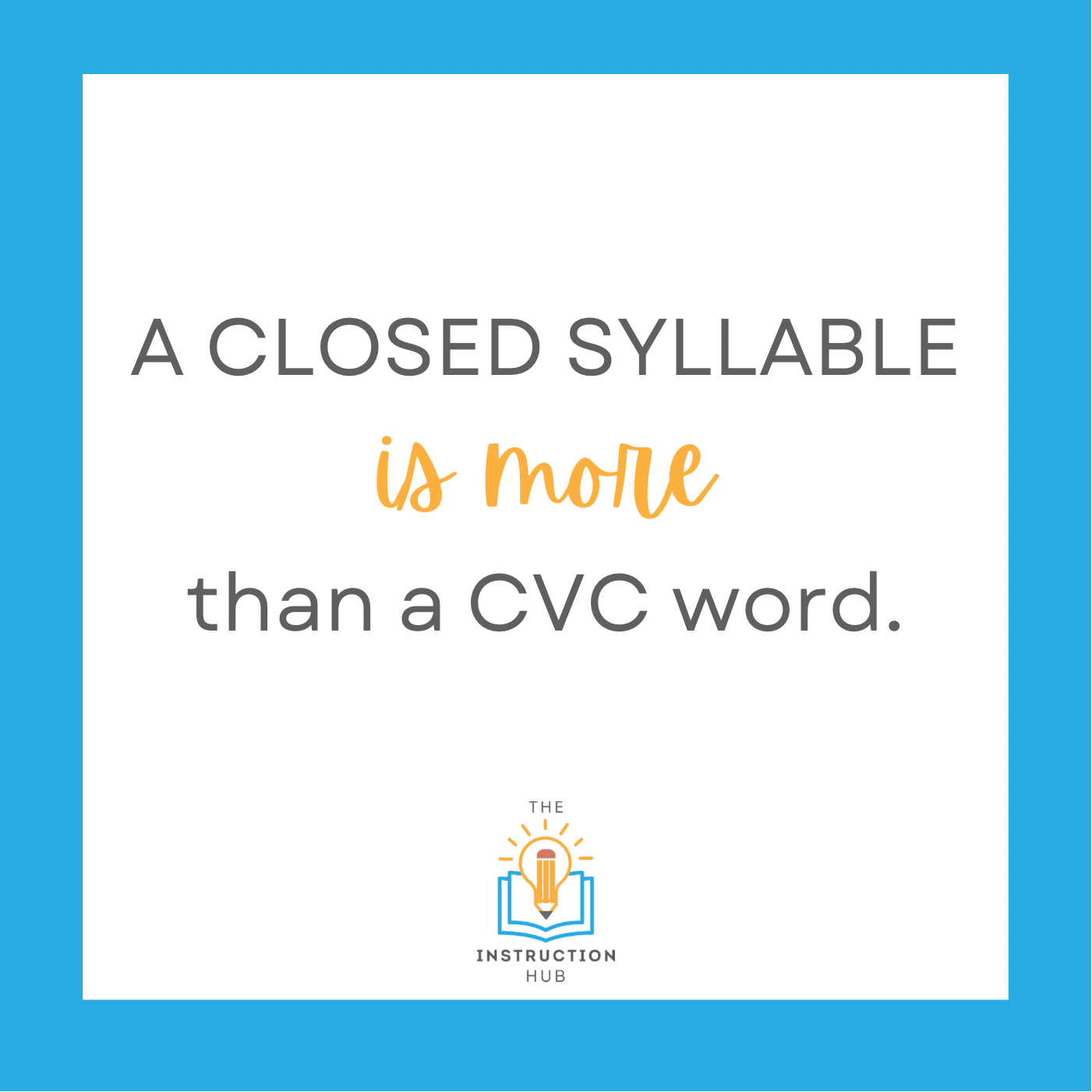What is a Closed Syllable?
A Closed Syllable is a syllable that has one vowel followed by one or more consonants. The vowel sound is short. It is the most common syllable type, making up just under 50% of the syllables in English. It is the first one you will teach to students, especially considering our Orton-Gillingham principle of moving simple to complex. You can read more about the OG principles HERE.
The Gillingham Manual explains that when students have learned basic vowels and consonants, they are ready for the first syllable type: CLOSED.
I begin teaching Closed Syllable using words or syllables that just have a vowel and consonant. For example, I would use words and syllables such as at, in, ob*, and ug*. I would use real words and syllable examples because I want my students to see that a syllable can be a word OR part of a word. Another reason I use syllable examples is that often students have read so many closed syllables, such as dog, cat, and run, that they have committed them to memory. I want to encourage my students to read by pattern and not by familiarity.
When providing syllable instruction, we have to be mindful to address all examples of a syllable type. A Closed Syllable is more than a CVC word. I encourage my course participants to minimize the use of this language and begin naming the syllable type with the student to start connecting the name of the syllable type with the pattern. Closed Syllables and the VC (vowel-consonant) pattern have the possibility of additional consonants or combinations before and after the vowel.
When providing checkpoints for the CLOSED Syllable, focus on the pattern. A CLOSED syllable has a vowel followed by one or more consonants, and the vowel sound is short.
The following are all examples of Closed Syllables:
at
hog
glad
twist
ject
lodge
kiss
The last two include spelling conventions (-dge, FLoSS(Z) rule), but they are still Closed Syllables.
Would I introduce twist as a Closed Syllable example to an early learner? Not until they have had the concept of a blend. On a similar note, would I use dog and cat to teach an older student the concept of a Closed Syllable? No, I would want to select examples that were developmentally appropriate. One way I do this is to use roots (or bases) that they will one day learn as a root, but could get practice reading as a syllable. I could use struct, ject, rupt as examples for an older learner. Check out the picture to see an example.
If we focus on the pattern VC and encourage students to find the vowel first, they can then apply their knowledge of the Closed Syllable to read words at various levels.
It is important to revisit the patterns of syllables as we layer on new learning. This way, students see there can be multiple examples of the type.
I hope this was a helpful tip! If you need a resource for teaching the syllable types, my book Once Upon a Phonogram has introductory pages with matching decodable texts for each of them. You can find that here!
This information is the intellectual property of ©2022 The Instruction Hub. Do not use or repurpose without expressed permission from The Instruction Hub. Please give The Instruction Hub an attribution if you choose to use, reference, or quote/paraphrase copyrighted materials. This includes but is not limited to blogs, social media, and resources.



